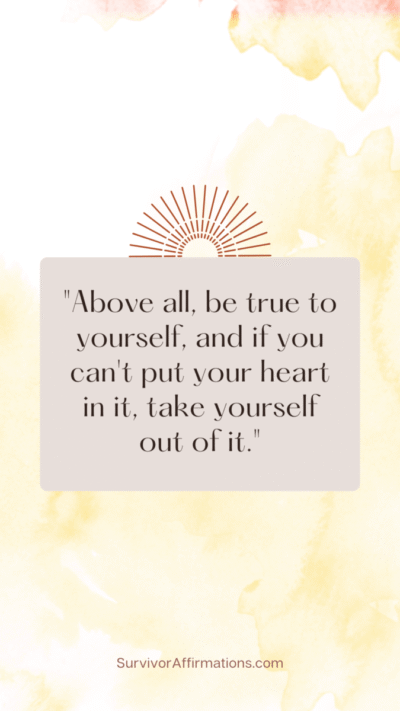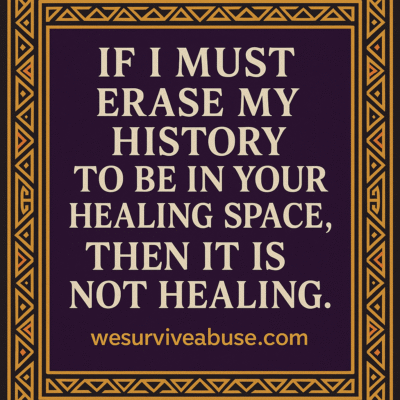The phrase “we should all fight together because we are all minorities” can be aspirational and hopeful. But history teaches us—repeatedly—that wi

The phrase “we should all fight together because we are all minorities” can be aspirational and hopeful.
But history teaches us—repeatedly—that without explicitly defining terms, roles, and shared principles of justice, these coalitions often fracture under the weight of unacknowledged power imbalances, racial hierarchies, and unspoken exclusions.
When labor is demanded before clarity, equity, or even safety, the result is often exploitation rather than solidarity.
Here are several historic examples that show the importance of defining terms before engaging in collective struggle:
1. The Women’s Suffrage Movement in the U.S.
 What happened: “Black women like Sojourner Truth, Ida B. Wells, and Mary Church Terrell did not wait to be invited into the struggle for justice—they led it, fueled it, and sacrificed for it. We stand on bold shoulders. Yet while they fought fiercely for suffrage, white women often shut them out of the spotlight. And still, it was white men—lawmakers, judges, and enforcers of power—who clutched the vote like a weapon, denying it to all women, and with even greater cruelty, to Black women.”
What happened: “Black women like Sojourner Truth, Ida B. Wells, and Mary Church Terrell did not wait to be invited into the struggle for justice—they led it, fueled it, and sacrificed for it. We stand on bold shoulders. Yet while they fought fiercely for suffrage, white women often shut them out of the spotlight. And still, it was white men—lawmakers, judges, and enforcers of power—who clutched the vote like a weapon, denying it to all women, and with even greater cruelty, to Black women.”The U.S. Women’s Suffrage Movement and Racial Exclusion
While the suffrage movement aimed to secure voting rights for women, it often marginalized Black women. Prominent leaders like Frances Willard and Susan B. Anthony made strategic decisions that sidelined women of color. For instance, Willard made racially insensitive remarks, suggesting that African Americans were a threat to social order, to appeal to Southern white women. Anthony, disheartened by the 15th Amendment granting Black men the vote before white women, expressed opposition, highlighting racial tensions within the movement. NPR
The conflict: After the Civil War, many white suffragists opposed the 15th Amendment because it gave Black men the vote before white women. Both Frances Willard and Susan B. Anthony made racist statements to appease Southern white women.
Lesson: For some, unity was assumed based on womanhood, but whiteness remained the default. Without naming and confronting racism within the movement, Black women were erased and betrayed—even as they kept laboring for liberation.
**Note- White women leaders shut Black women leaders out of the spotlight not out of womanhood. Meanwhile, Black women continued building, growing, educating, developing, discovering, creating, loving, nurturing, and innovating, as the divinely miraculous created female human beings we are.
2. The Civil Rights & Gay Rights Movements
Bayard Rustin, the brilliant strategist behind the 1963 March on Washington, was a Black gay man whose leadership was pushed into the background—not because he lacked vision, but because his 1953 arrest for a consensual same-sex act was used as a weapon in a deeply homophobic society, even within the Civil Rights movement.
This underscores how unaddressed biases can hinder unity in collective struggles. King’s College London
Lesson: Even in movements for justice, unless we define whose rights we’re fighting for, whose labor is valued, and who is being protected, we risk repeating systems of erasure and harm.
*Note: Similar conflicts and tensions were noted in the movement when it came to Black women and centering the voices of victims of sexual violence at the hands of white police officers.
3. Third World Liberation Front Strikes (1968–69) – San Francisco State & UC Berkeley
What happened: A coalition of Asian American, Black, Chicano, and Native American students protested to demand ethnic studies programs.
Why it worked: They explicitly defined their shared goals while still recognizing their differences. They didn’t blur racial lines; they built bridges that honored them.
Third World Liberation Front (TWLF) Strikes (1968–1969)
The TWLF, a coalition of students from diverse ethnic backgrounds, organized strikes at San Francisco State College and UC Berkeley to demand Ethnic Studies programs. Their success lay in explicitly acknowledging their distinct identities while uniting under shared goals . This deliberate inclusivity was crucial for their collective action.Fiveable+5Wikipedia+5strikecollection.quartexcollections.com+5
Lesson: Solidarity was powerful because it was clear-eyed, negotiated, and intentionally inclusive. Labor followed vision—not vague notions of unity.
4. The United Farm Workers and Black Freedom Movements
César Chávez and Dolores Huerta led the fight for farmworkers’ rights. Black leaders like Martin Luther King Jr. and Coretta Scott King publicly supported the grape boycott.
But tensions sometimes existed: Chávez was criticized for anti-immigrant rhetoric in the 1970s, especially toward undocumented Mexican workers seen as “scabs.” César Chávez, the United Farm Workers (UFW), and Immigration
César Chávez, co-founder of the UFW, initially opposed undocumented immigration, fearing it undermined labor strikes. In the 1970s, he initiated the “Illegals Campaign,” which involved reporting undocumented workers to authorities . This stance created tensions within the labor movement, highlighting the need for clear definitions of solidarity and inclusivity.
Lesson: Coalitions must define who is included, who is protected, and how struggles intersect. Otherwise, harm is repeated under the banner of “justice.”
5. The Anti-Apartheid Movement in South Africa
Many international groups joined the fight against apartheid.
But Black South African women often pointed out that sexism within the movement was ignored, even as they took on the heaviest burdens.
The Anti-Apartheid Movement and Gender Dynamics
In South Africa’s anti-apartheid struggle, women played vital roles but often faced marginalization within the movement. Their experiences underscore the importance of addressing internal inequalities to achieve true solidarity.
Lesson: Anti-racism that doesn’t address patriarchy or class still leaves people behind. Solidarity without specificity still kills.
- Note: This was similar to the call from Black women in the United States Black Panther Party
Summary:
 Yes, we should all fight together—but only after we’re honest about:
Yes, we should all fight together—but only after we’re honest about:
Who is included and who isn’t.
Whose pain is centered and whose is ignored.
Who is asked to labor, and who is allowed to lead.
What “justice” actually looks like for the most marginalized among us.
Without those truths, “we” can become just another mask for exploitation.
These historical examples remind us that while unity is essential in the fight for justice, true solidarity demands more than shared opposition—it demands clarity. It is not only okay but necessary to be honest and remain aligned with your personal values and beliefs.
However, when you join movements or coalitions for the purpose of making social change, there must be group alignment, clarity, honesty, and ongoing reflection. Otherwise, we risk building alliances on shaky ground—where silence replaces truth, and exploitation hides behind the language of solidarity.
Sustainable justice begins when we ask: Who are we fighting for? Who is included? Who still isn’t safe—even within the circle?
 What happened: “Black women like Sojourner Truth, Ida B. Wells, and Mary Church Terrell did not wait to be invited into the struggle for justice—they led it, fueled it, and sacrificed for it. We stand on bold shoulders. Yet while they fought fiercely for suffrage, white women often shut them out of the spotlight. And still, it was white men—lawmakers, judges, and enforcers of power—who clutched the vote like a weapon, denying it to all women, and with even greater cruelty, to Black women.”
What happened: “Black women like Sojourner Truth, Ida B. Wells, and Mary Church Terrell did not wait to be invited into the struggle for justice—they led it, fueled it, and sacrificed for it. We stand on bold shoulders. Yet while they fought fiercely for suffrage, white women often shut them out of the spotlight. And still, it was white men—lawmakers, judges, and enforcers of power—who clutched the vote like a weapon, denying it to all women, and with even greater cruelty, to Black women.”